1. A Healing Oil: Naftalan, Azerbaijan
Whenever one hears news about oil, probably, the first thing that comes to the mind is gasoline and everything associated with it: cars, airplanes, ferries, etc. However, almost nobody would guess that crude oil can actually be used directly as a cure without any preprocessing. Of course, you would like to first get rid of any sand or associated water from the crude, but otherwise the oil chemical structure is not changed, and no chemical additives are applied in the process.
One of the very few world famous spots where a medical treatment by crude oil is performed is Naftalan. The city is located in central Azerbaijan in a close proximity to the Lesser Caucasus mountain range and approximately 50 km away from Ganja city (Fig. 1).
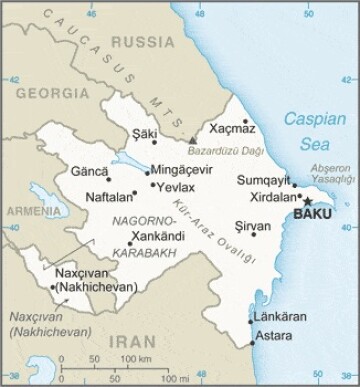
Fig. 1—Location of Naftalan. Source.
Naftalan city combines an ancient history, a remarkable mountainous nature with green thick forests and modern futuristic hotels offering all kinds of medical treatment including unique oil therapy. There are a few natural oil seepages in the city, but in order to extract this unique oil in commercial volumes, drilling wells is required. Although the recovered volumes are not very large, the natural seepages are not able to provide the current demand for this medical oil.
The region has been famous with this natural wonder since a very long time ago. According to various sources, in the 13th century Marco Polo wrote of a “fountain from which oil springs in great abundance […] not edible but good to treat men and animals." An extensive research has been performed regarding the Naftalan crude oil properties.
A large portion of Azerbaijan’s gross domestic product comes from oil and gas exports from the hydrocarbon fields located in the Caspian Sea. One of the biggest among them is the Azeri-Chirag-Gunashli (ACG) oil field.
ACG crude is valued high on commodity markets due to its properties. However, Naftalan oil properties are much different. Naftalan oil is very heavy and viscous compared to ACG grade and this is why it is not in the commercial interests to export it. The efficiency of Naftalan oil is mainly attributed to a very high presence of naphthalene, which reaches up to 50%. This hydrocarbon compound is an active element in coal tar soaps, which are used to cure various skin diseases such as eczema, psoriasis, and many more.
Due to its curing effects, Naftalan became a famous spa city in 1926, although the history of this unique place started much earlier, in 1873. During the Soviet era, people from around every corner of the Soviet Union came to visit the city resorts and tried to cure disorders which seemed impossible to treat at the time. Nowadays, Naftalan also receives thousands of visitors from numerous countries. Most of the guests are still coming from the former Soviet Union, but the number of Westerners is also increasing due to the growing fame and relatively cheap prices. Azerbaijan takes all necessary steps to restore and widen Naftalan’s previous fame in the world and increase its popularity among the locals as well.
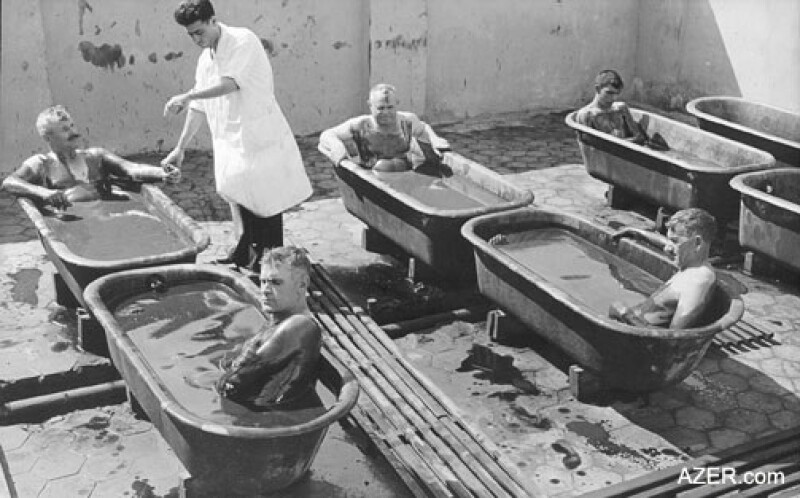
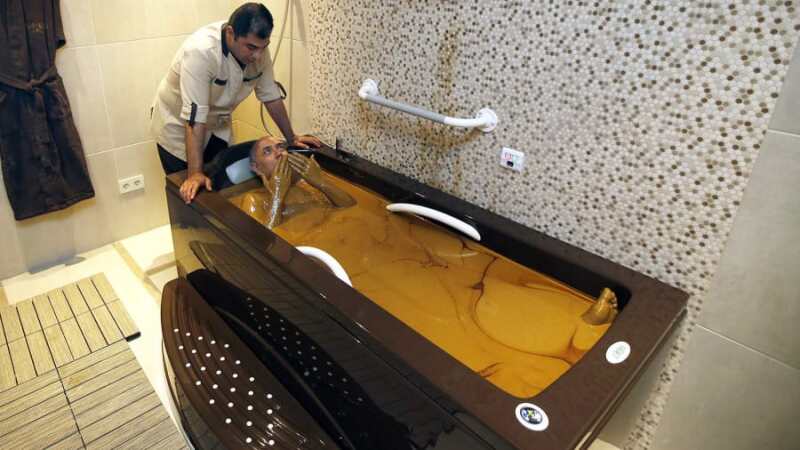
Fig. 2—Old and modern Naftalan spas. Source: left, right
2. One of the Deepest Oil Project: Kaombo, Offshore Angola
Angola is a country where many ultradeepwater offshore oil projects are located. At present, the biggest deep offshore development in this country is Kaombo, located on Block 32, 260 km off the coast of Luanda, the capital of Angola (Fig. 3).
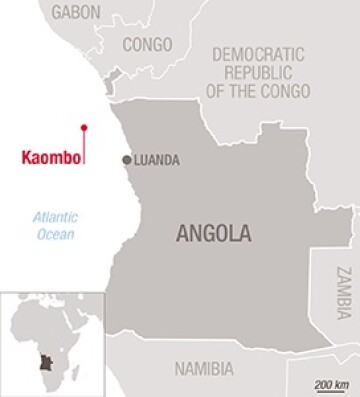
Fig. 3—Location of Kaombo. Source.
Kaombo became the first project launched in 2014 on the ultradeep offshore Block 32 near the Angolan coast. Here, approximately 660 million bbl of estimated oil reserves are located at depths of 1,950 m and quite far from the shore. The extreme temperature and pressure conditions at these depths, as well as the spread of oil reserves in six different fields forced the use of advanced technologies and unique infrastructure, with almost 300 km of subsea pipelines connecting to two oil tankers that were converted into floating production, storage and offloading vessels: Kaombo Norte and Kaombo Sul.
The Kaombo project’s operator, Total, is also the leading oil producer in Angola, present in the country since 1953. In addition to Block 32, the company partnered or owned licenses on other areas of the Angolan shore, including Blocks 0, 14, 17, 48. In Block 48, Total, in a partnership with Sonangol, is planning to drill the world’s deepest offshore well in waters more than 2 miles deep.
3. The Most Viscous Oil: The Orinoco Oil Belt, Venezuela
Discovered in 1936 in the Eastern Basin of Venezuela, the Orinoco Oil Belt (Faja petrolifera del Orinoco in Spanish) contains the largest highly viscous oil reserves in the world. Its name is owed to the Orinoco River, which is one of the longest rivers in South America and the fourth largest river in the world by discharge volume of water. Orinoco Belt spreads across 55,134 km2. Oil deposits are found in four fields: Ayacucho, Carabobo, Boyacá, and Junín.

Fig. 4—Orinoco Oil Belt schematic map. Source.
The geological formations of the Orinoco belt are under permanent changes and the organic processes are in early stages of stabilization; therefore, hydrocarbons from the Faja are considered as “young hydrocarbons.”
When the Faja was first discovered, it was thought to be a bituminous crude, i.e., a crude with API lower than 10° and viscosities higher than 10,000 cP at reservoir temperatures, because there were mostly unconsolidated sands whose pores were impregnated with oil. Its extraction and refinery were very complex, and technologies at that time were unable to develop these fields.
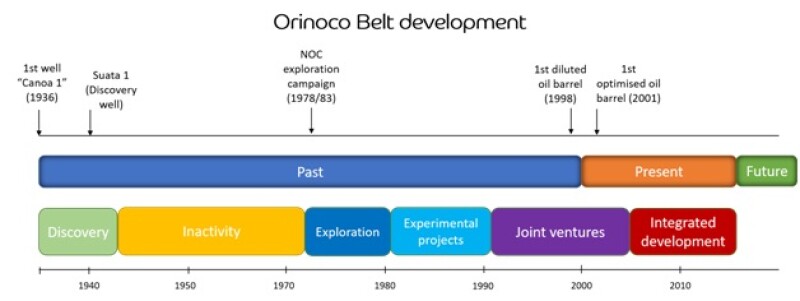
Fig. 5—Chronological development of Orinoco Belt. Source: PDVSA, Slide 30.
Today, Orinoco Belt is part of Venezuela’s oil reserves, with an approximate capacity of production of 3 million of extra-heavy oil barrels per day; it could satisfy the country’s energy demand for over 300 years, according to the Venezuelan national oil company, PDVSA.
Orinoco Oil Belt has some unique characteristics which make this “young” oil development very complex:
Highly viscous oil: With an 8° API oil and viscosities of 2,500–9,000 cP, the main challenge is making it flow. Strategy used: Multilateral wells to increase flow boundaries and progressing cavity pumps are installed to optimize well performance and guarantee surface flow. Oil is pumped to a processing plant where it is upgraded in order to transport it.
Unconsolidated sands with high permeability and shallow burial influenced by fluvial and deltaic environments: Sand production is a global problem for extra-heavy oil fields. It can affect the whole production chain from plugging the liners to corroding the surface installations up to treatment plant failure. Strategy used: Well stimulation and the use of adequate liners are some of the mitigating measures available (SPE 163923-MS).
Production mechanisms: A cold production mechanism (natural depletion) led by solution gas drive. As the reservoir depletes, gas is liberated in the form of immobile bubbles leading up to foamy oils. This foamy oil behavior affects the recovery factor and exploitation schemes (WPC 30144); however, it is difficult to prove and quantify.
Economic environment: All “easy” basins are now explored. Mostly difficult-to-exploit reservoirs are left. In a low oil price environment, where company strategies are redirecting toward new energies, producing extra- heavy oil is even harder to manage financially.
4. The World’s Longest Producing Oil Well: Pennsylvania, US
The oil industry dates back to 1859 when Edwin L. Drake drilled the first well at Titusville, Venango County, Pennsylvania, but the Drake Well went dry after 2 years of operation. However just 2 miles north, in McClintock, the world’s oldest producing well is still producing oil. The title of the world’s oldest continuously producing well belongs to the Pennsylvanian McClintock Well #1 (Pennsylvania Heritage and Museum Commission, Drake Well Museum and Park).


Fig. 6—McClintock Well #1. Source: left, right.
The history of the McClintock well started in 1861 when it was commissioned by J. Watson and drilled by J.D. Angier. The original name of the borehole was the Colby Well, but the well became widely known as the McClintock Well #1. Initially the land, where the well was located, was owned by the McClintock family, but later Sarah McKnight McClintock opened the property for drilling leases. After that, Brundred Oil Corp. acquired the property in 1919 and sold it in 1952 to the Quaker State Corp. The company pumped the McClintock several times per year in order to maintain its status as the world's oldest operating oil well; further, Quaker State merged with Pennzoil Company in the late 1990s, and the company was subsequently acquired by Royal Dutch Shell (Pennsylvania Heritage).
The Pennsylvania Historical and Museum Commission owned McClintock Well #1 in 2000. The well is pumped quarterly and is able to produce one to two barrels, although, at its peak, the well was able to produce up to 50 b/d.

Elshad Yadigarov is a senior surface well test engineer at Schlumberger with responsibilities in well testing data acquisition. Yadigarov previously worked for Halliburton and BP. His current work location is Azerbaijan, and has had training and business assignments in France, Abu Dhabi, Saudi Arabia, Qatar, Kazakhstan, and Russia among others. Yadigarov graduated from Norwegian University of Science and Technology with an MSc in reservoir engineering and petrophysics.

Andrea Osorio is a reserves coordinator in Total E&P Nigeria. She provides technical coordination of the affiliate’s reserves evaluation. She has previously performed studies in enhanced oil recovery (EOR) history matching and forecast, EOR roadmap, and EOR business cases. She holds a petroleum engineering degree from La Universidad del Zulia in Venezuela and in reservoir geosciences and engineering from IFP School, France. Osoria is fluent in Spanish, English, and French. As a student, Osorio volunteered as IFP School SPE Student Chapter vice president, served as the editor of the chapter newspaper called The Rolling Barrel, and participated and won several prizes on SPE student paper contests.

